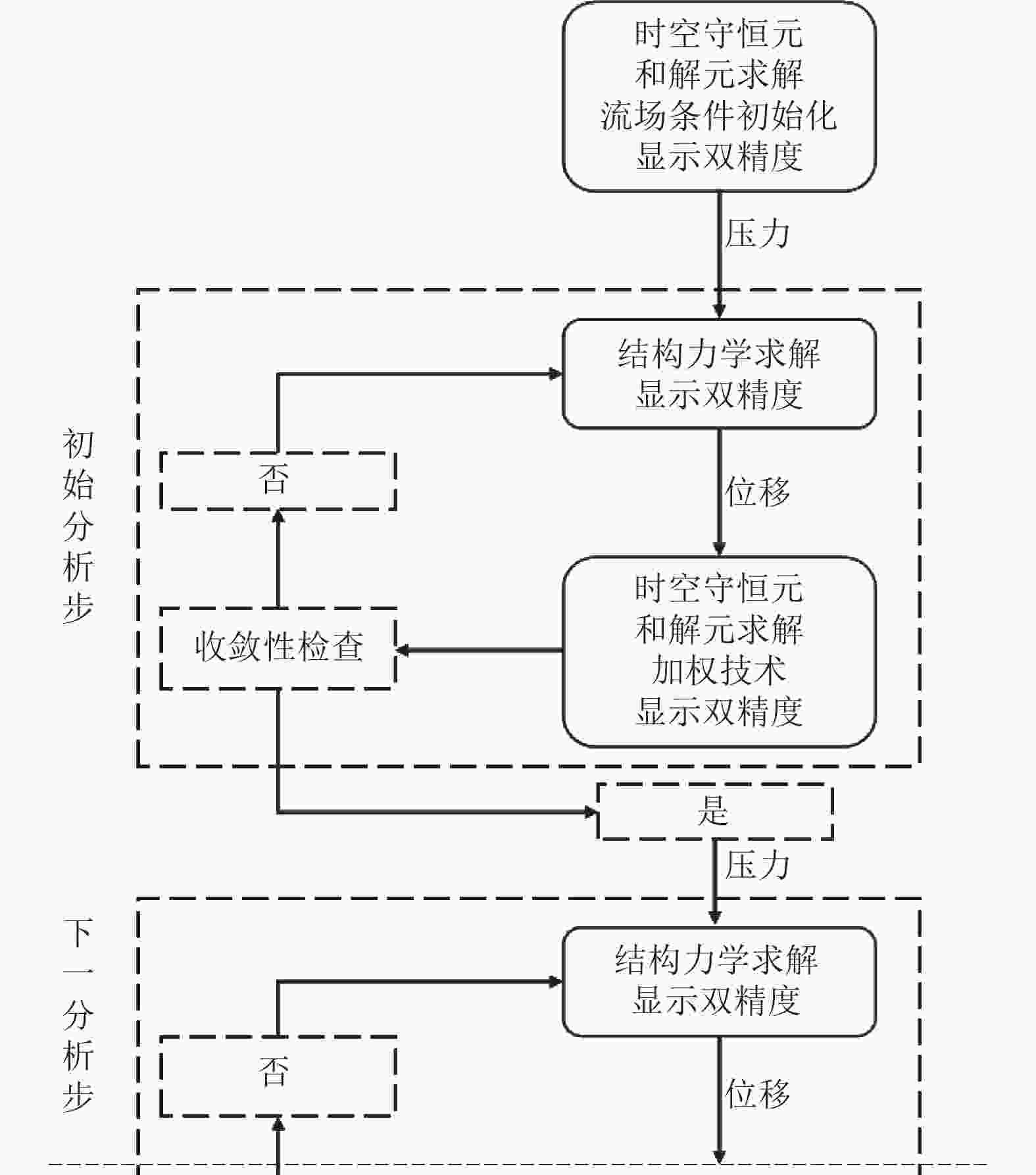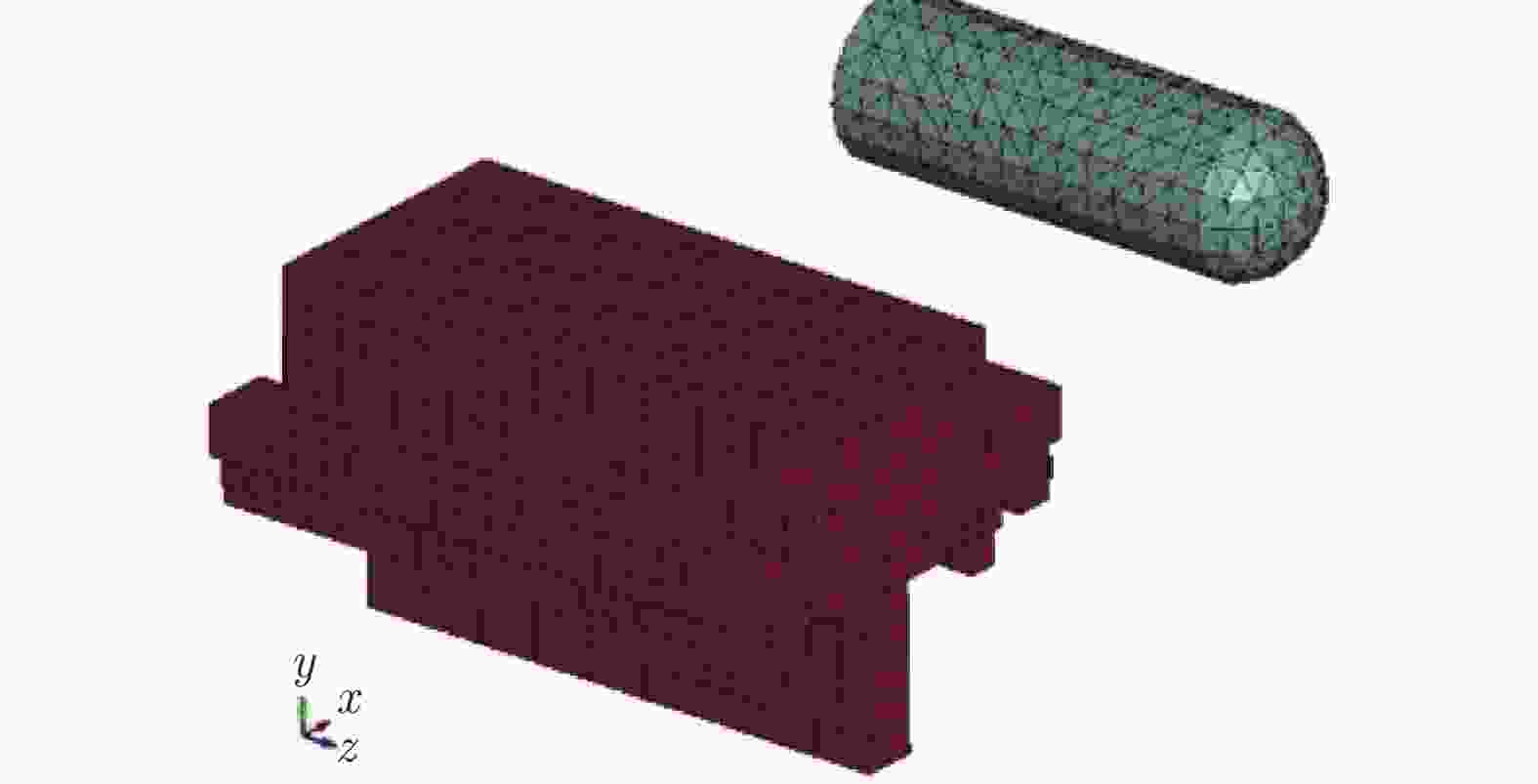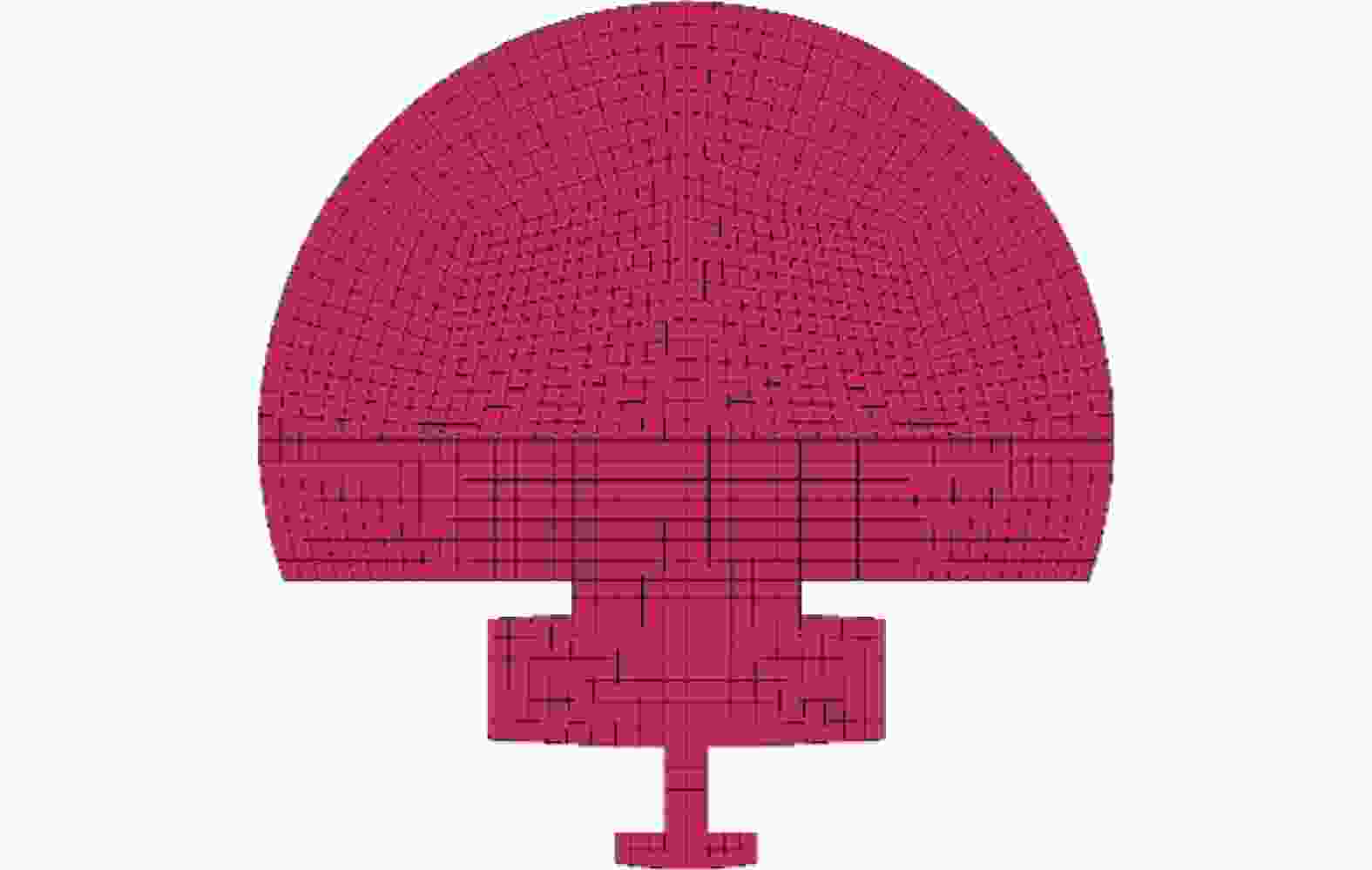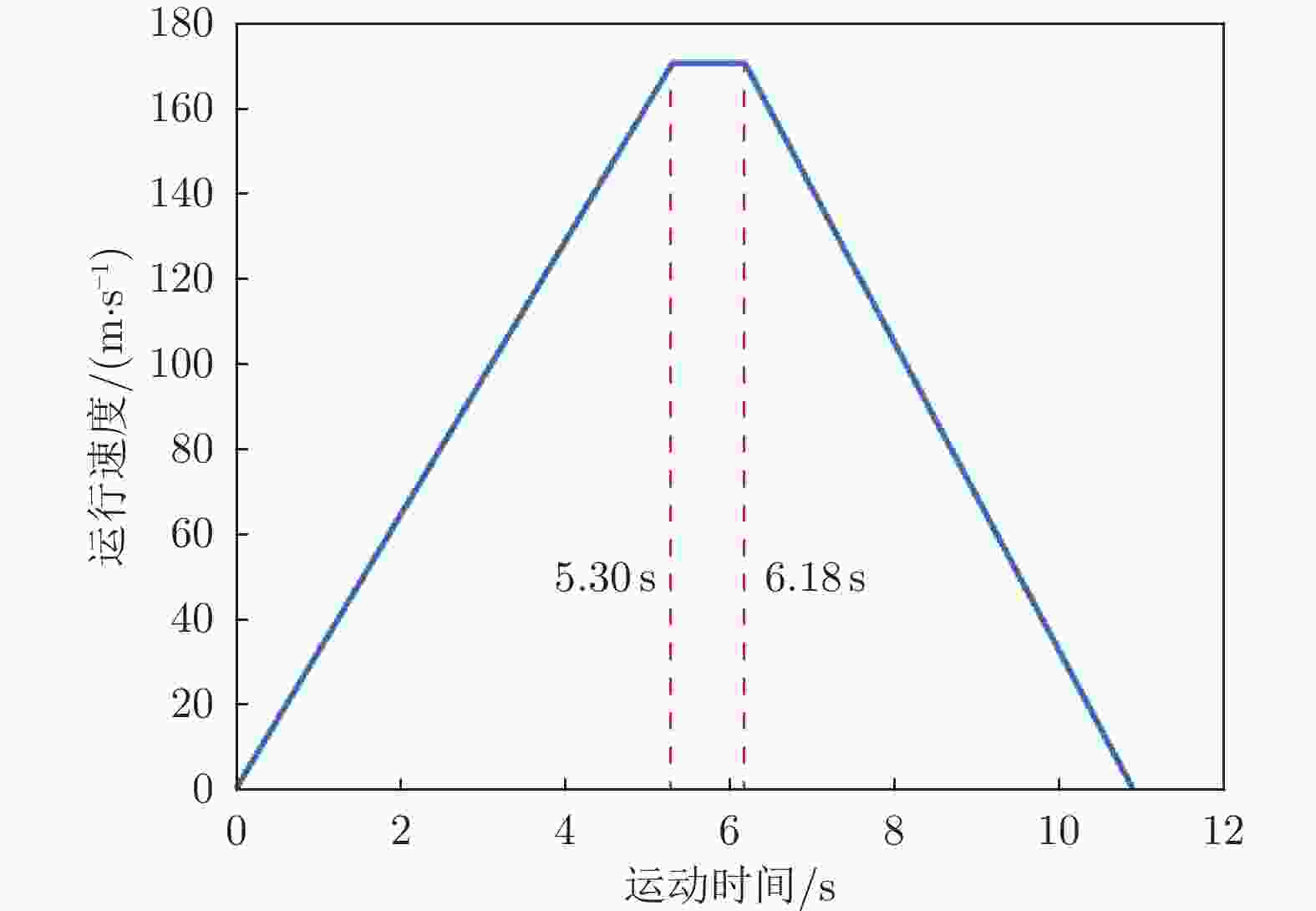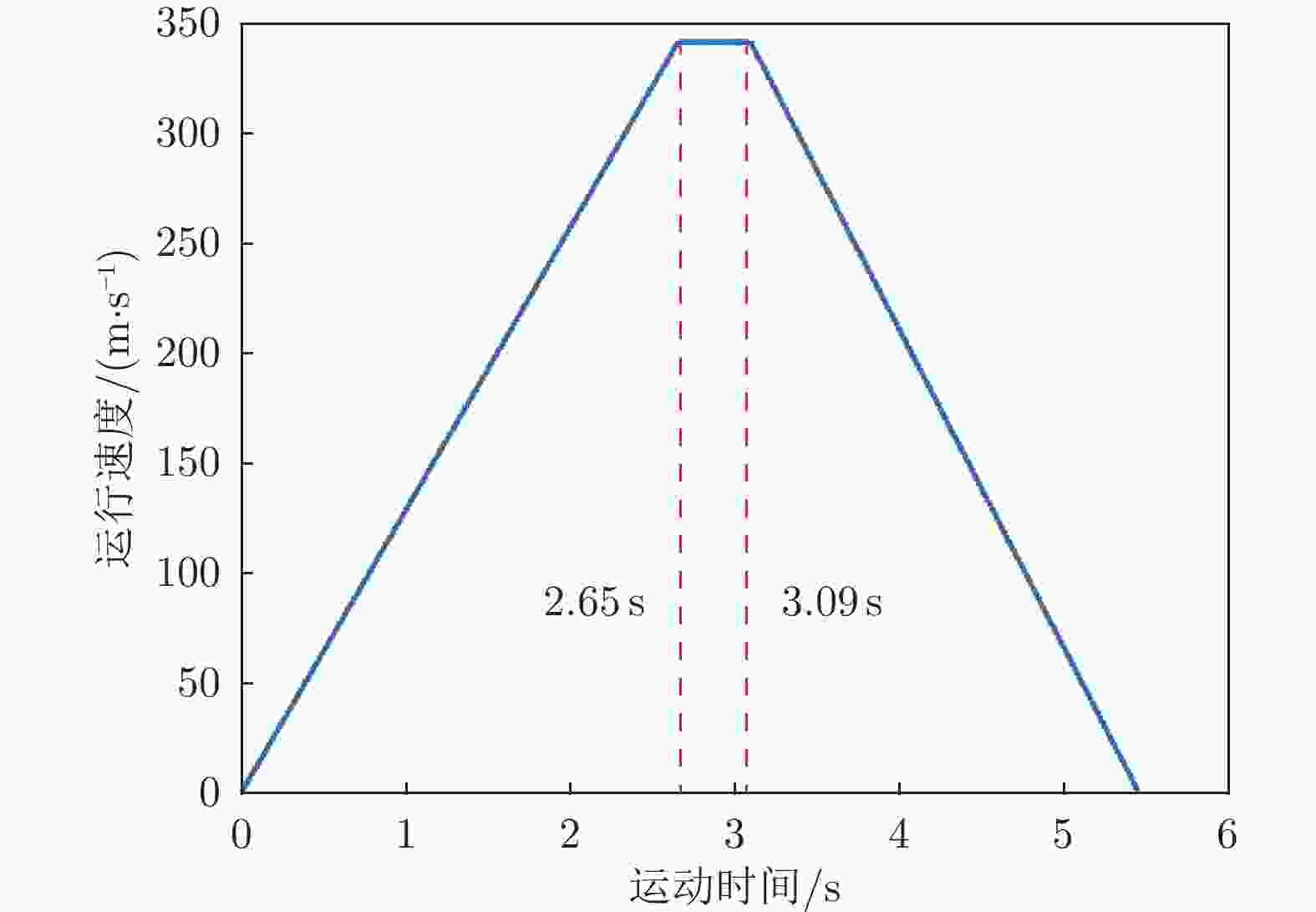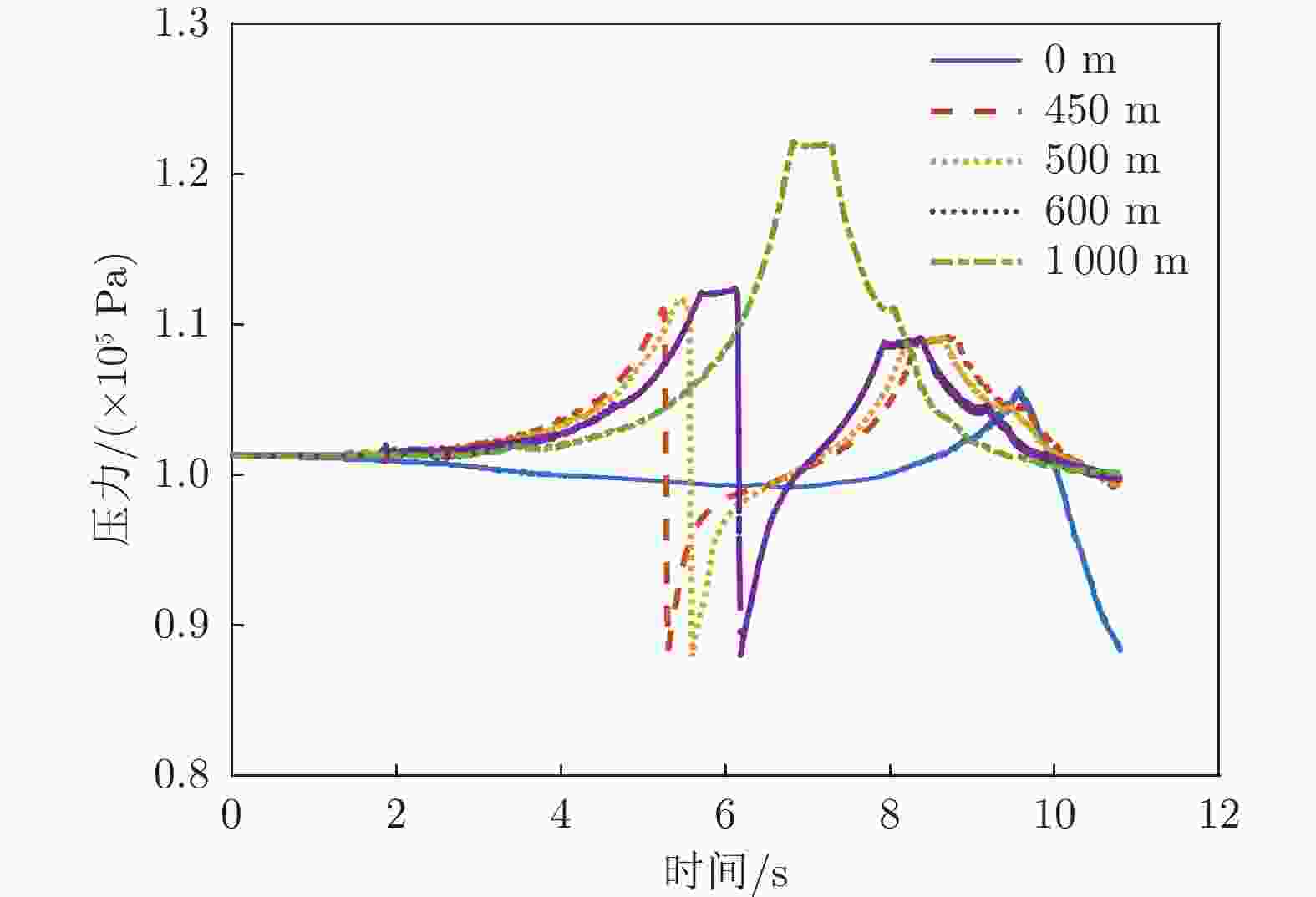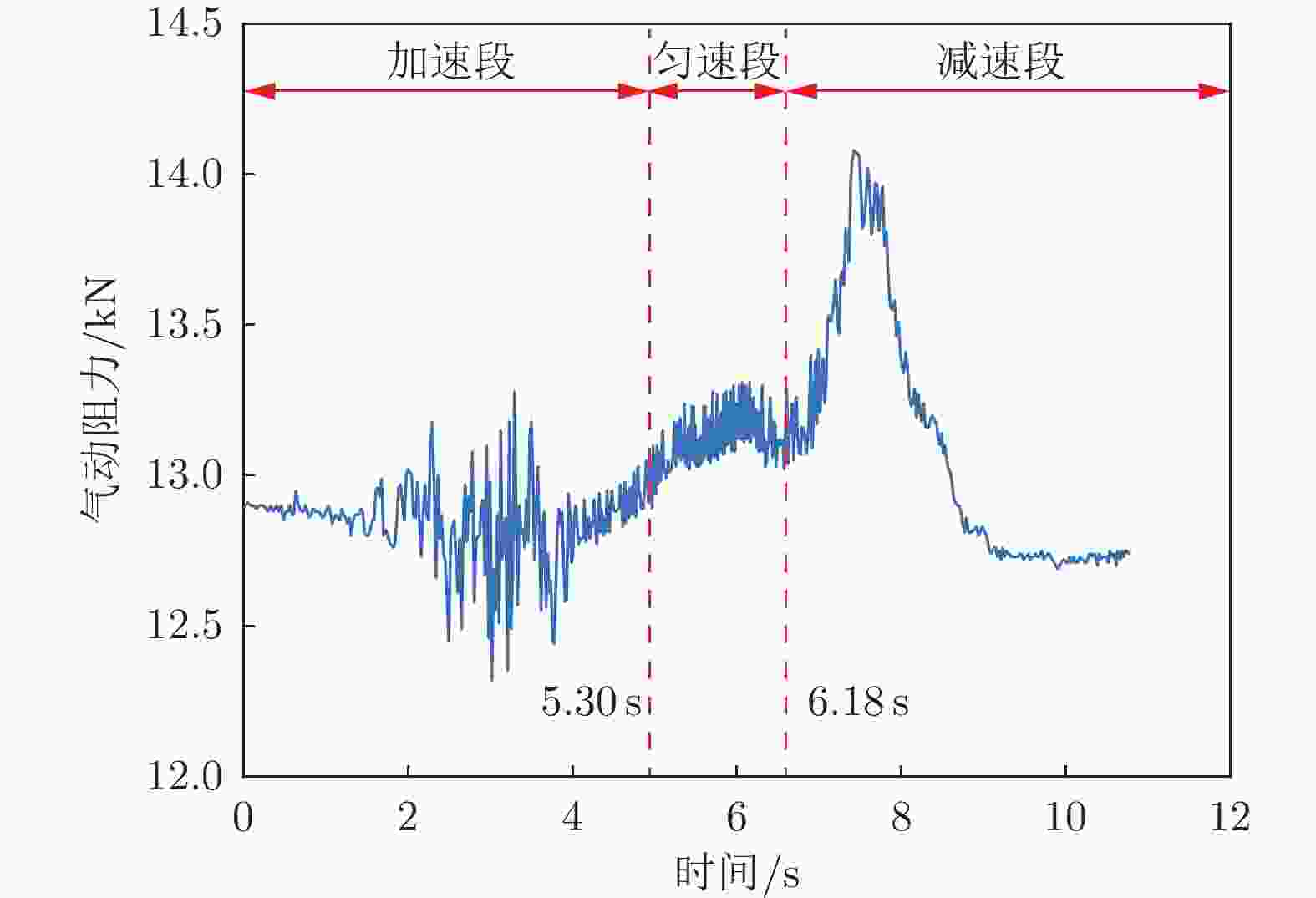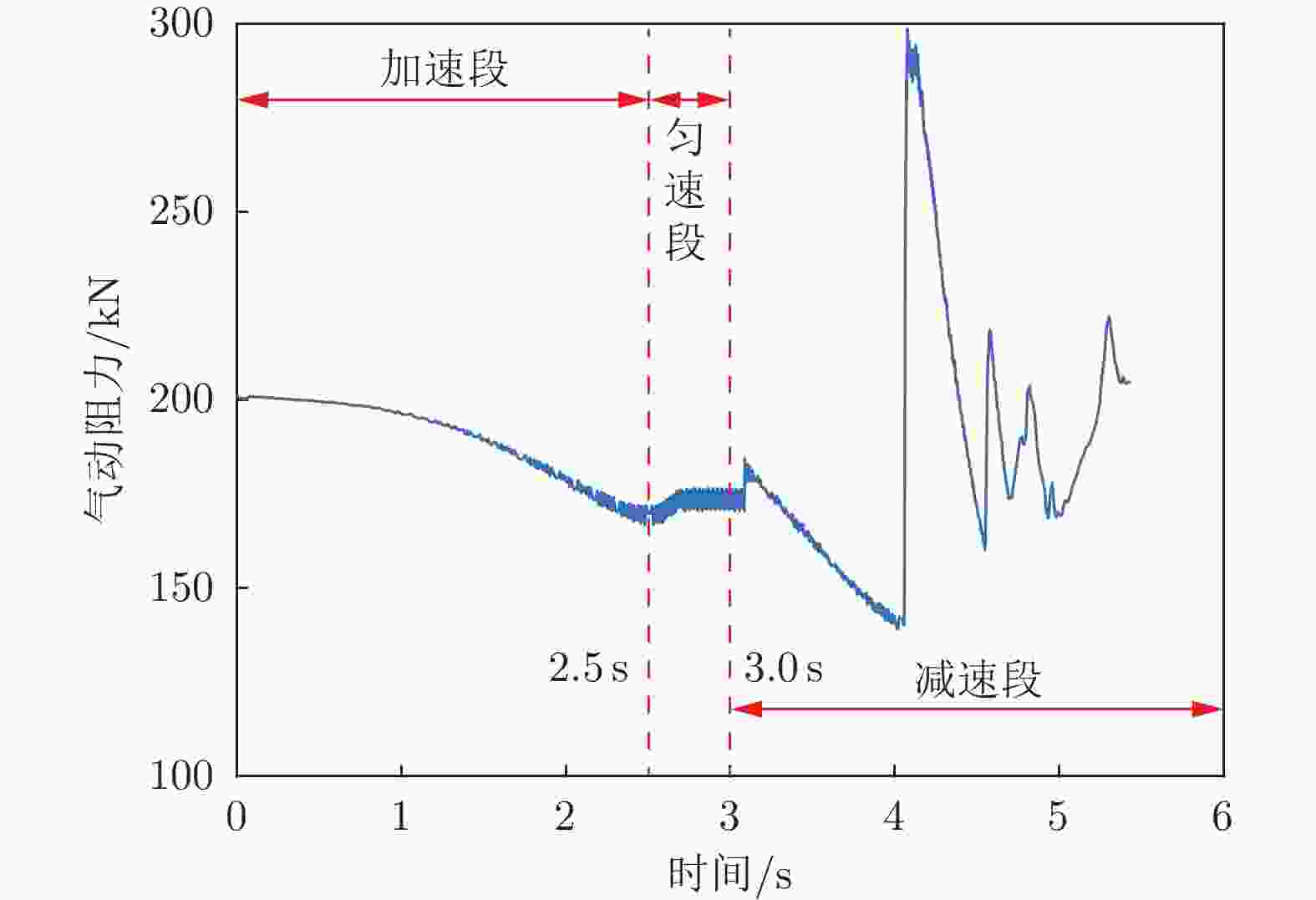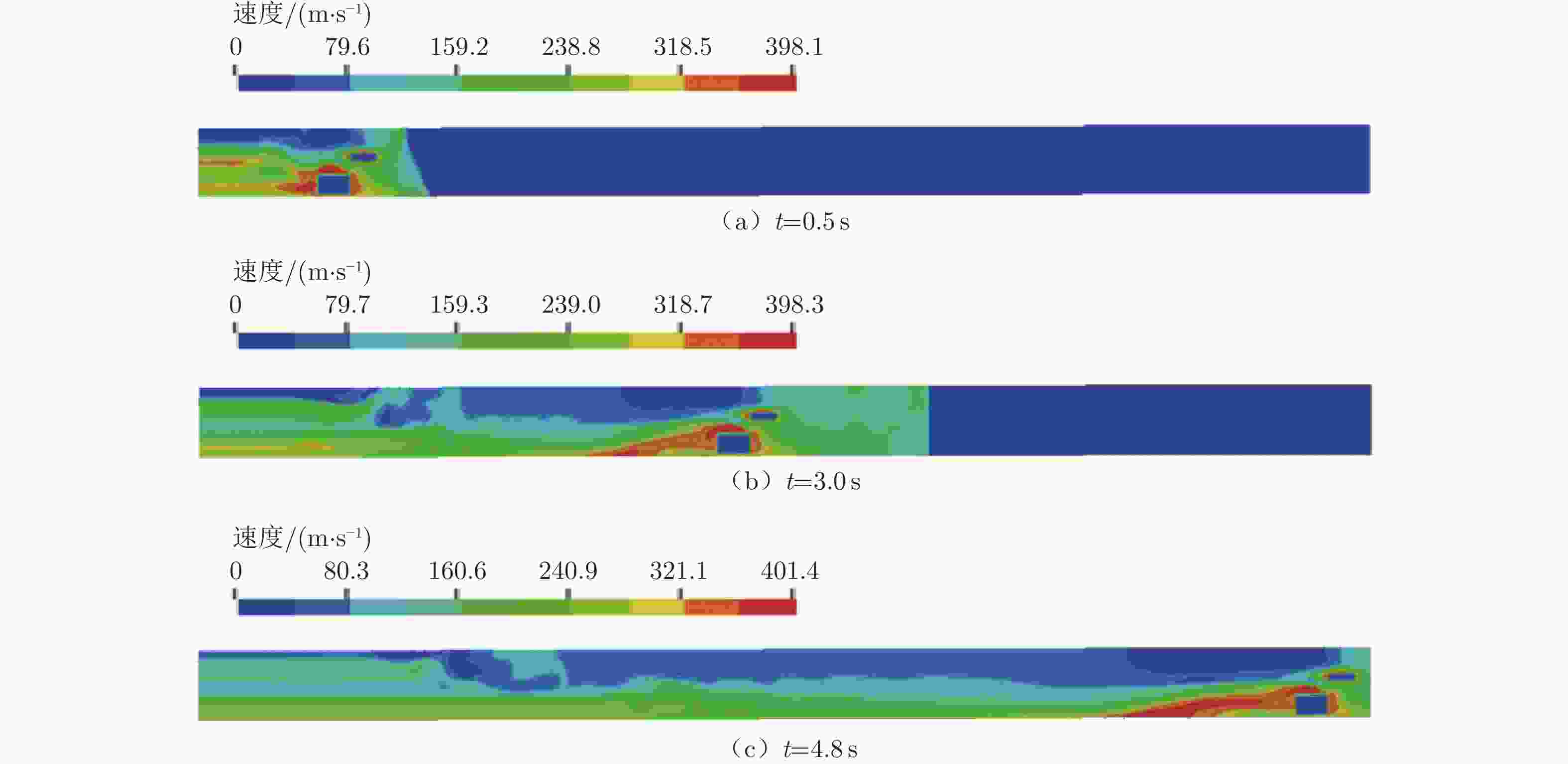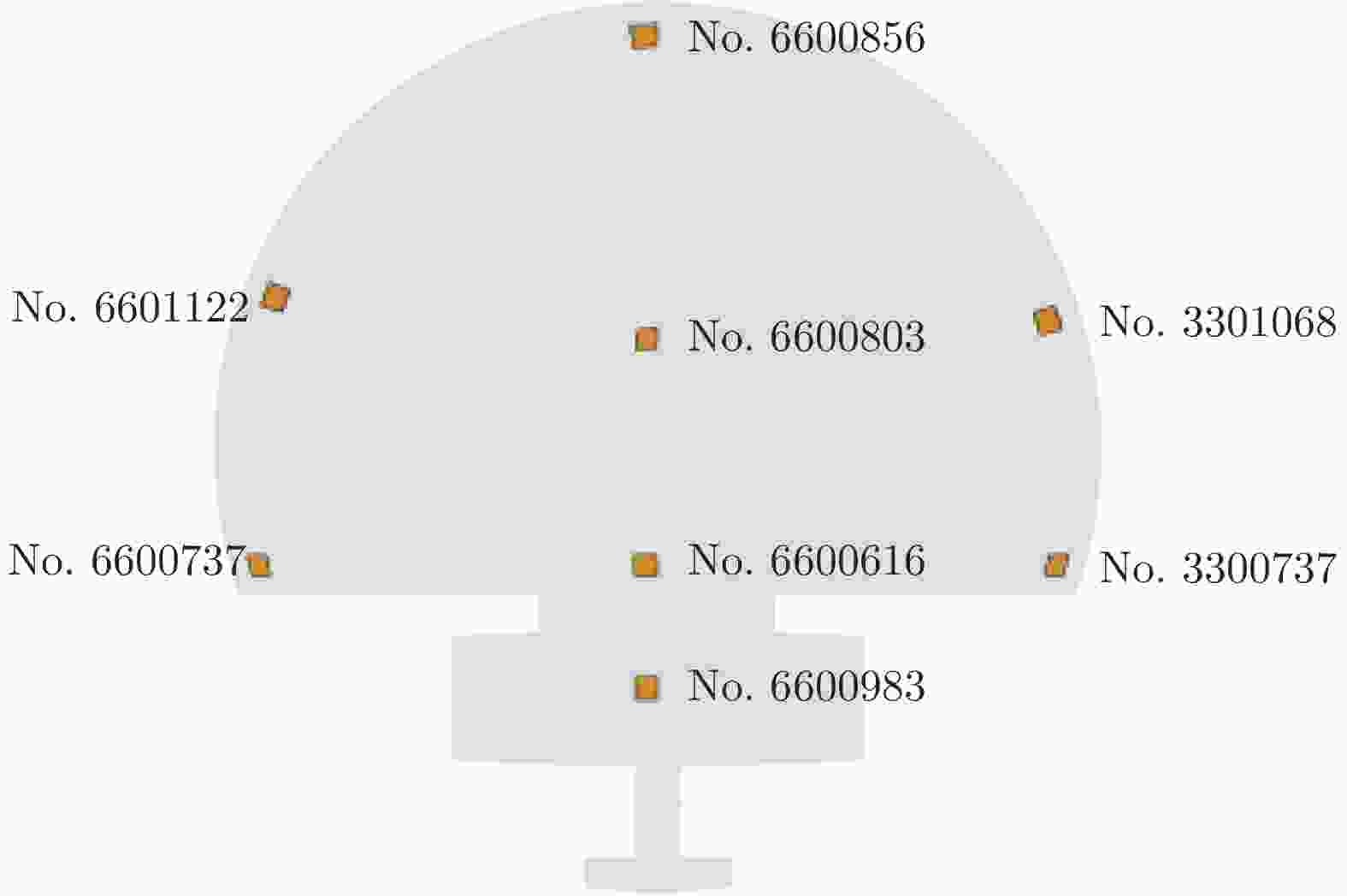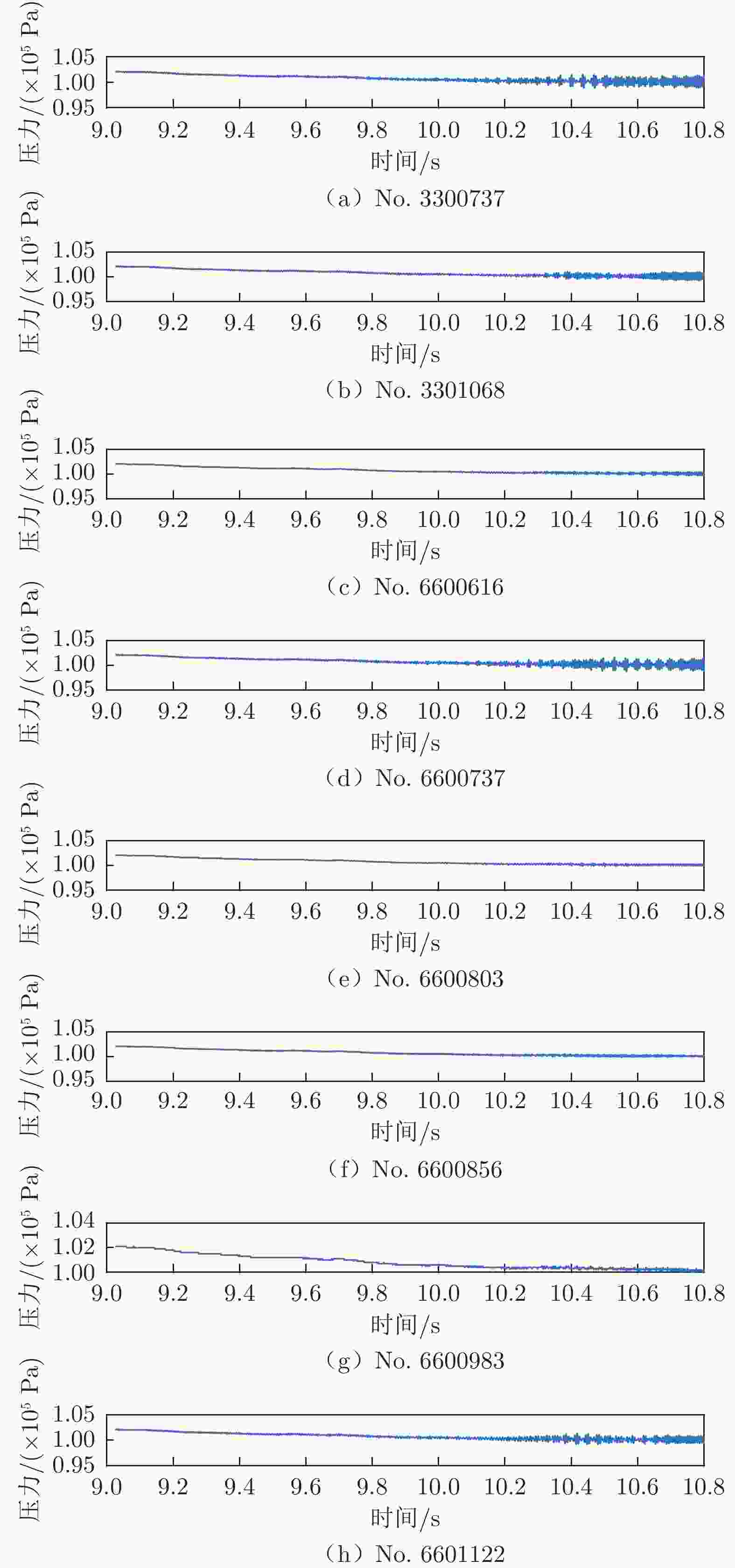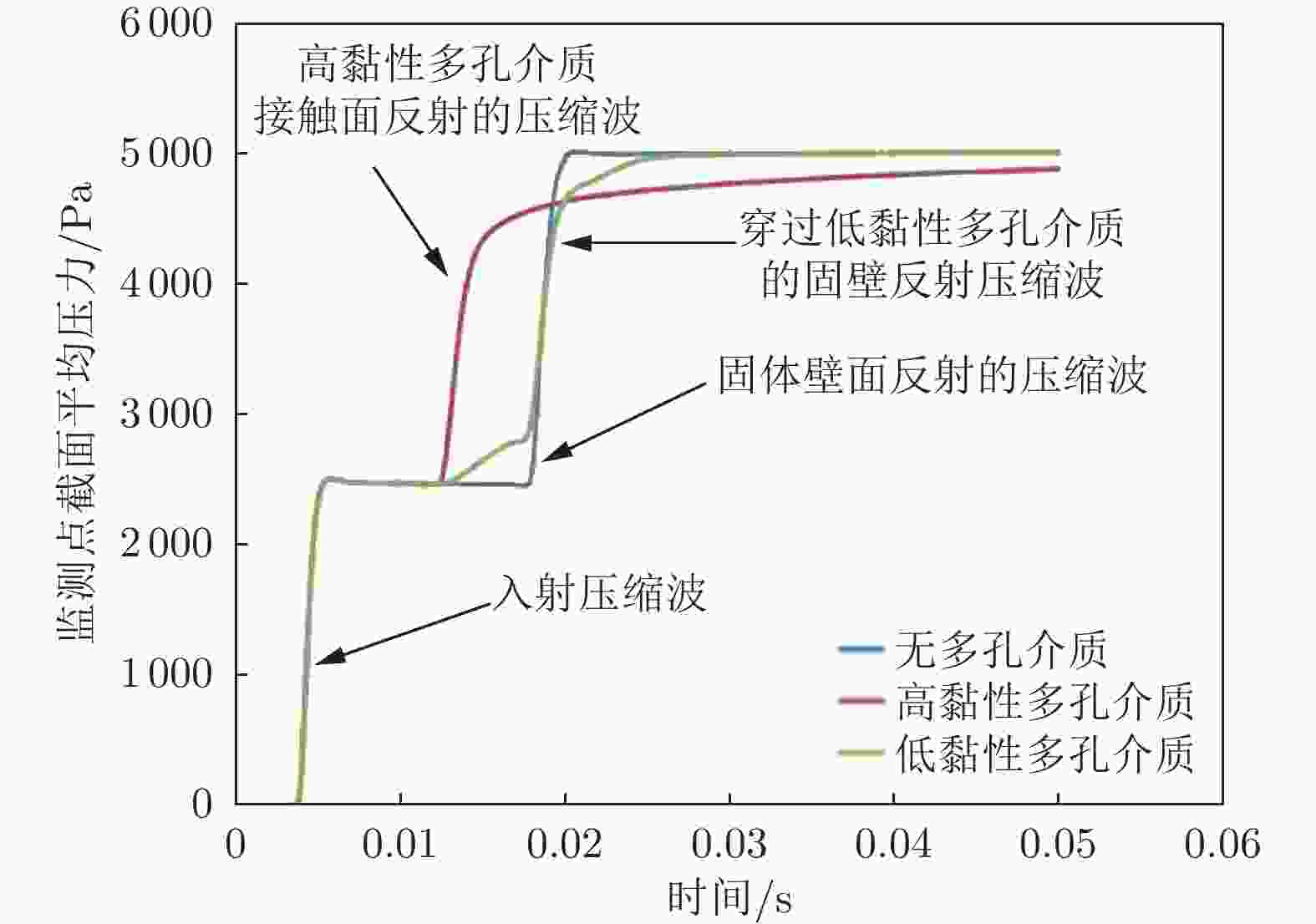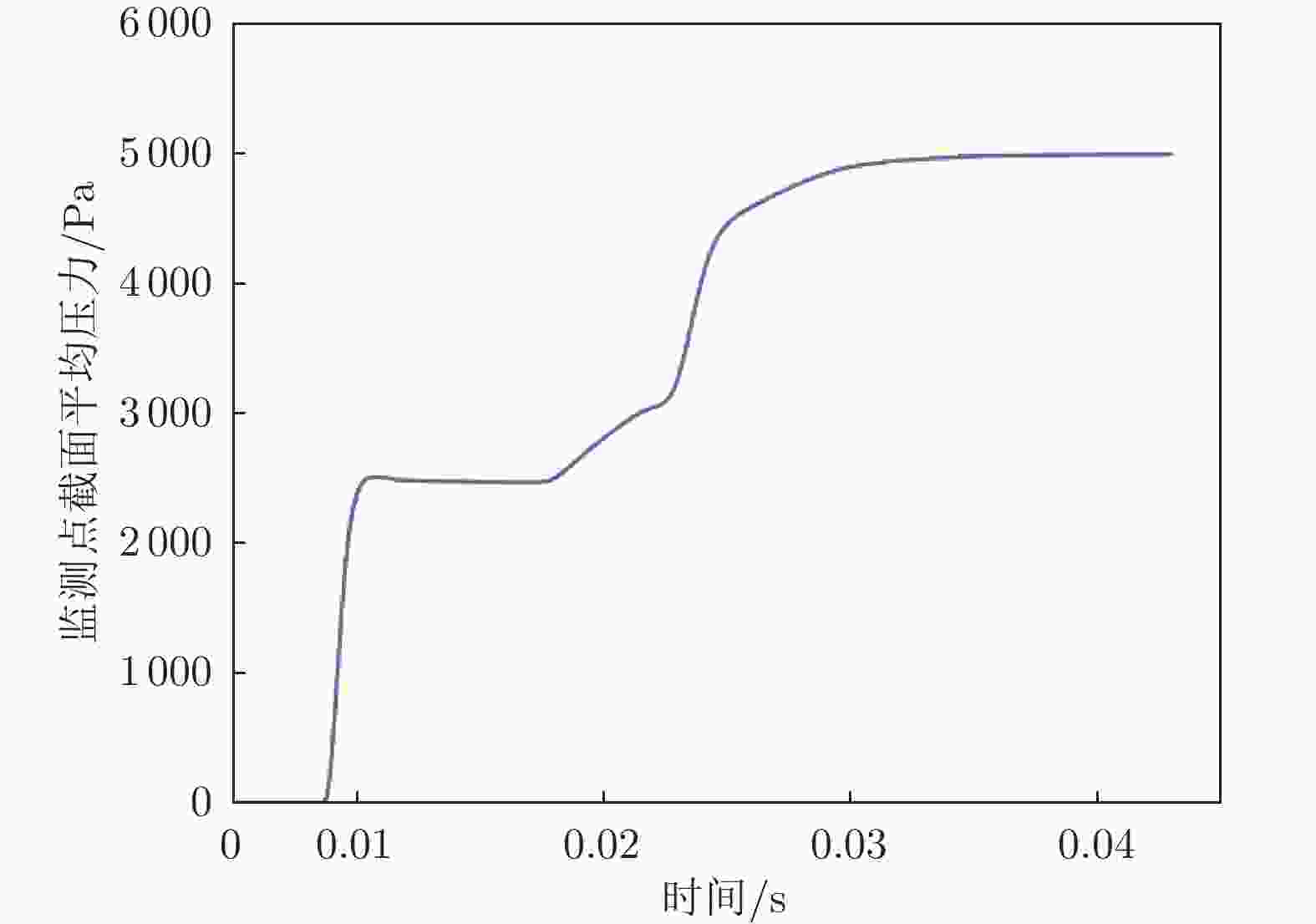Simulation evaluation of aero-structure interaction for moving model in maglev flight tunnel
-
摘要: 磁浮飞行风洞是一种“体动风静”的新概念空气动力试验设备。模型在长直线密闭管道中高速运动过程的气动特性复杂,会对周围流场产生强烈的扰动,涉及到波系传播和气动与结构之间的单向耦合问题。本文从气动结构耦合仿真的角度,对磁浮飞行风洞试验过程中模型高速运动所产生的非定常气动特性进行了分析和评估,基于一种新型时空守恒元和解元(CE/SE)方法耦合求解了管道内模型周围的三维可压缩流场变化,获得了模型高速运动过程的气动力参数变化、波系传播特性及管道内压力分布,并开展了多孔介质消波材料参数仿真设计分析,为磁浮飞行风洞消波措施设计等提供支撑。Abstract: The maglev flight tunnel is a novel concept aerodynamics test facility, in which the high speed translation of the moving model in the long straight closed tunnel would induce extremely complicated aerodynamic characteristics. The motion of model’s fast acceleration, deceleration and constant speed moving have strong interference to the surrounding fluid field, causing wave propagation problems and the aero-structure single way coupling problems. The unsteady characteristics originated from the high speed moving of the model in the maglev flight tunnel are investigated and evaluated from the view of aero-structure coupling. Based on the new CE/SE method, the 3D surrounding compressible fluid of the moving model in tunnel is solved, and the aerodynamic parameters variations, wave propagation characteristics and the pressure distribution in the tunnel are obtained. Simulation design analysis of parameters for porous medium wave absorbing materials is conducted, which could provide a support for the key technical problems like wave absorbing construction design of the maglev flight tunnel.
-
表 1 仿真工况参数
Table 1. List of simulation conditions
工况 速度/(m·s−1) 动压/Pa 密度/(kg·m−3) 1 170 101325 1.25 2 340 101325 1.25 -
[1] 刘政崇. 风洞结构设计[M]. 北京: 中国宇航出版社, 2005. [2] 战培国. 未来的新型无风低速风洞[J]. 流体力学实验与测量, 2000, 14(4): 50. [3] 王乐卿, 高广军, 吴雨薇, 等. 高速列车车身风阻制动板气动外形设计[J]. 中南大学学报(自然科学版), 2022, 53(5): 1655–1667.WANG Y Q, GAO G J, WU Y W, et al. Aerodynamic shape design of aerodynamic braking plates installed on a high-speed train body[J]. Journal of Central South University(Science and Technology), 2022, 53(5): 1655–1667. [4] 李一凡, 李田, 张继业, 等. 导流装置对高速磁浮列车气动特性的影响[J]. 实验流体力学, 2023, 37(1): 91–99. doi: 10.11729/syltlx20220109LI Y F, LI T, ZHANG J Y, et al. Effect of deflector devices on the aerodynamic characteristics of high-speed maglev trains[J]. Journal of Experiments in Fluid Mechanics, 2023, 37(1): 91–99. doi: 10.11729/syltlx20220109 [5] 倪章松, 张军, 符澄, 等. 磁浮飞行风洞试验技术及应用需求分析[J]. 空气动力学学报, 2021, 39(5): 95–110. doi: 10.7638/kqdlxxb-2021.0206NI Z S, ZHANG J, FU C, et al. Analyses of the test techniques and applications of maglev flight tunnels[J]. Acta Aerodynamica Sinica, 2021, 39(5): 95–110. doi: 10.7638/kqdlxxb-2021.0206 [6] 刘加利, 张继业, 张卫华. 真空管道高速列车气动特性分析[J]. 机械工程学报, 2013, 49(22): 137–143. doi: 10.3901/JME.2013.22.137LIU J L, ZHANG J Y, ZHANG W H. Analysis of aerodynamic characteristics of high-speed trains in the evacuated tube[J]. Journal of Mechanical Engineering, 2013, 49(22): 137–143. doi: 10.3901/JME.2013.22.137 [7] 田红旗. 中国列车空气动力学研究进展[J]. 交通运输工程学报, 2006, 6(1): 1–9. doi: 10.3321/j.issn:1671-1637.2006.01.001TIAN H Q. Study evolvement of train aerodynamics in China[J]. Journal of Traffic and Transportation Engineering, 2006, 6(1): 1–9. doi: 10.3321/j.issn:1671-1637.2006.01.001 [8] 张晓涵, 李田, 张继业, 等. 亚音速真空管道列车气动壅塞及激波现象[J]. 机械工程学报, 2021, 57(4): 182–190. doi: 10.3901/JME.2021.04.182ZHANG X H, LI T, ZHANG J Y, et al. Aerodynamic choked flow and shock wave phenomena of subsonic evacuated tube train[J]. Journal of Mechanical Engineering, 2021, 57(4): 182–190. doi: 10.3901/JME.2021.04.182 [9] NAKATA D, YASUDA K, HORIO S, et al. A fundamental study on the hybrid rocket clustering for the rocket sled propulsion system[C]//Proc of the 52nd AIAA/SAE/ASEE Joint Propulsion Conference. 2016. doi: 10.2514/6.2016-4868 [10] LOFFTUS D, LUND T, ROTE D. High-lift flight tunnel phase ii report[R]. NASA/CR-2000-210653, 2000. [11] 周勇为, 常熹钰, 易仕和. 低湍流度磁悬浮风洞的气动和结构设计[J]. 流体力学实验与测量, 2001, 15(4): 1–6.ZHOU Y W, CHANG X Y, YI S. The aerodynamic and structural design of low turbulence intensity of MSWT[J]. Experiments and Measurements in Fluid Mechanics, 2001, 15(4): 1–6. [12] CHANG S C. The method of space-time conservation element and solution element—a new approach for solving the navier-stokes and Euler equations[J]. Journal of Computational Physics, 1995, 119(2): 295–324. doi: 10.1006/jcph.1995.1137 [13] ZHANG Z C, YU S T J, CHANG S C. A space-time conservation element and solution element method for solving the two- and three-dimensional unsteady Euler equations using quadrilateral and hexahedral meshes[J]. Journal of Computational Physics, 2002, 175(1): 168–199. doi: 10.1006/jcph.2001.6934 [14] 黄婷婷. 时空守恒元解元方法及其在气动噪声计算中的应用[D]. 南京: 南京航空航天大学, 2011.HUANG T T. Space-time conservation element solution method and its application in aerodynamic noise calculation[D]. Nanjing: Nanjing University of Aeronautics and Astronautics, 2011. [15] 纪珍. 计算磁流体力学中几种数值方法比较研究[D]. 北京: 中国科学院空间科学与应用研究中心, 2011.JI Z. Comparative study on several numerical methods in computational magnetohydrodynamics[D]. Beijing: Center for Space Science and Applied Research, Chinese academy of science, 2011. [16] 刘凯欣, 王景焘, 王刚, 等. 时-空守恒元解元(CE/SE)方法综述[J]. 力学进展, 2011, 41(4): 447–461. doi: 10.6052/1000-0992-2011-4-lxjzJ2010-136LIU K X, WANG J T, WANG G, et al. A review on the CE/SE method[J]. Advances in Mechanics, 2011, 41(4): 447–461. doi: 10.6052/1000-0992-2011-4-lxjzJ2010-136 [17] 翁春生, TAY P G. CE/SE方法在非定常爆轰计算中的应用[J]. 空气动力学学报, 2003, 21(3): 301–310. doi: 10.3969/j.issn.0258-1825.2003.03.007WENG C S, TAY P G. Apply the CE/SE method to the simulation of unsteady detonation[J]. Acta Aerodynamica Sinica, 2003, 21(3): 301–310. doi: 10.3969/j.issn.0258-1825.2003.03.007 [18] 张增产, 沈孟育. 改进的时空守恒元和解元方法[J]. 清华大学学报(自然科学版), 1997, 37(8): 65–68.ZHANG Z C, SHEN M. Improved scheme of space time conservation element and solution element[J]. Journal of Tsinghua University (Science and Technology), 1997, 37(8): 65–68. [19] 沈洋, 刘凯欣, 陈璞, 等. 采用改进的CE/SE方法模拟方管中氢氧爆轰波的稳定传播结构[J]. 航空学报, 2019, 40(5): 68–80.SHEN Y, LIU K X, CHEN P, et al. Simulations of stable structure in oxy-hydrogen detonation propagation in square ducts using an improved CE/SE scheme[J]. Acta Aeronautica et Astronautica Sinica, 2019, 40(5): 68–80. [20] 高兴龙. 物伞流固耦合及多体系统动力学研究[D]. 长沙: 国防科学技术大学, 2016.GAO X L. Study on fluid-structure coupling of parachute and dynamics of multi-body system[D]. Changsha: National University of Defense Technology, 2016 . [21] FU C, GAO X L, SUN Y Q, et al. Numerical simulation of unsteady fluid parameters for maglev flight wind tunnel design[J]. Aerospace, 2022, 10(1): 34. doi: 10.3390/aerospace10010034 -







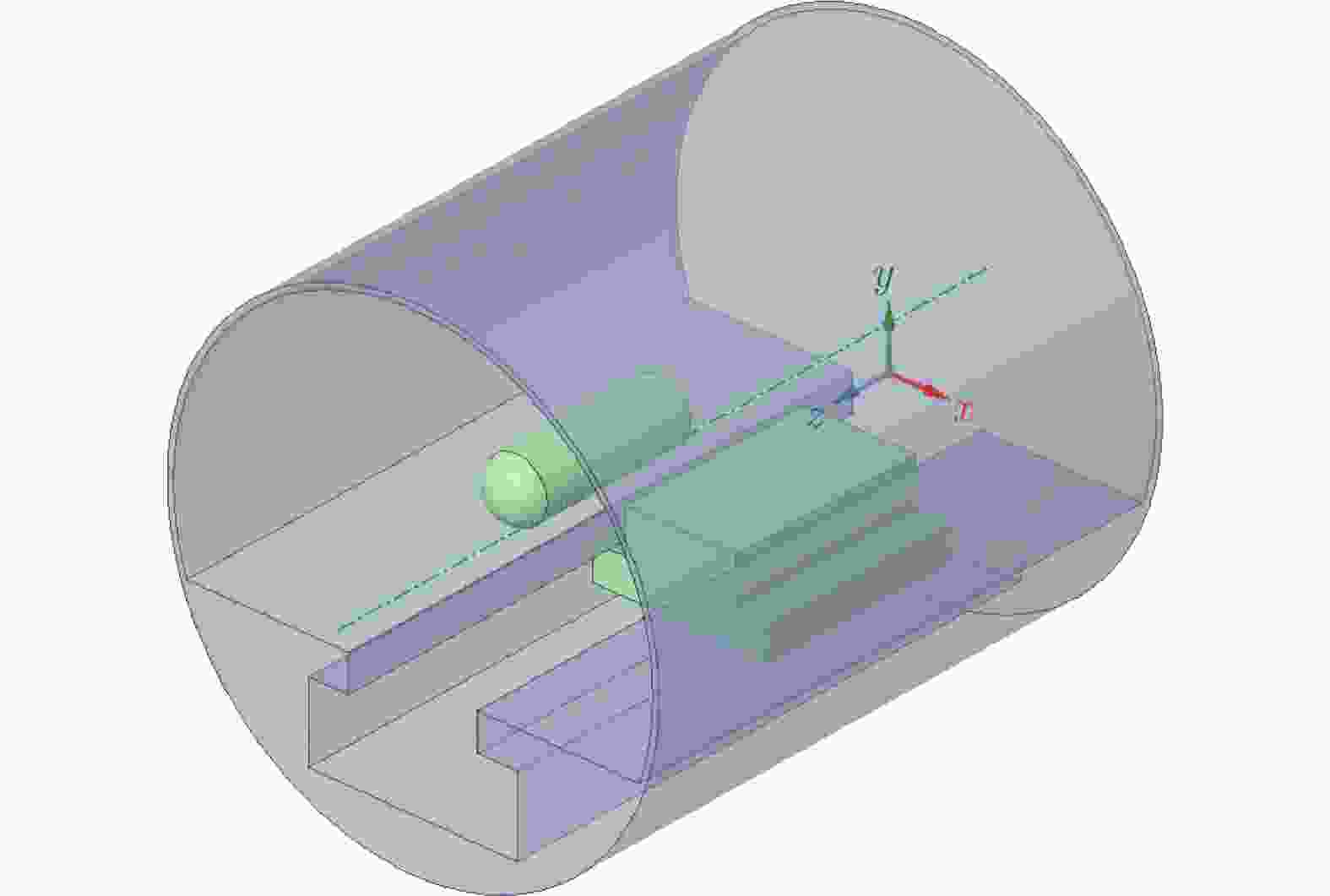
 下载:
下载:

